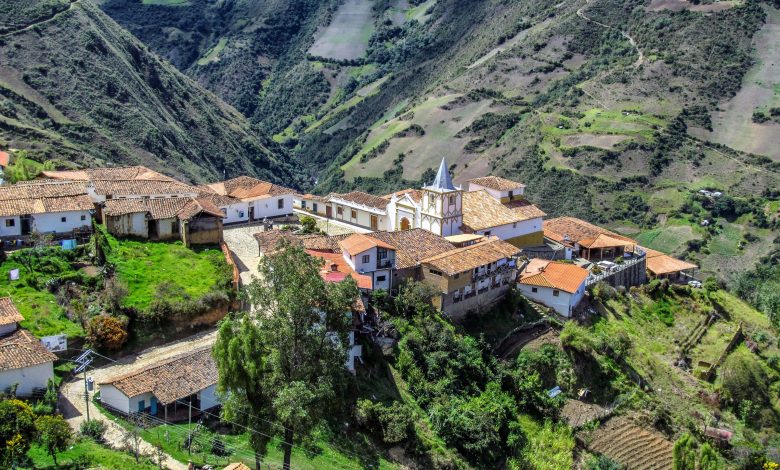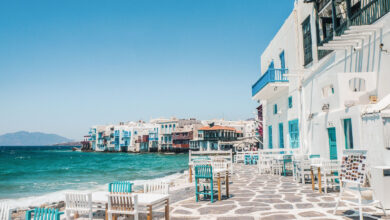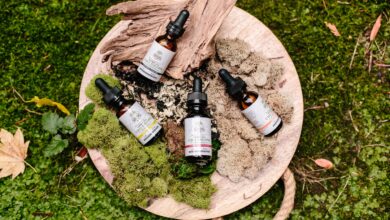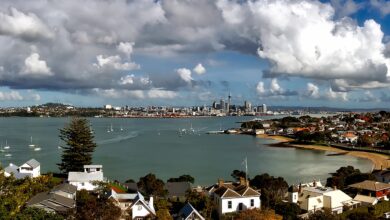
[ad_1]
The following post is written by Julien Mordret, who is founder of ExplorationJunkie.com. Julien is a true adventurer and is passionate about nature, wildlife, archaeology, adventure and exploration.
Considering hiking in Venezuela? The country is best known for its pristine, lush national parks and any nature enthusiast is sure to be amazed no matter what kind of scenery they prefer. For avid hikers who want to experience a trek of their lifetime, the Canaima National Park, the second-largest national park in Venezuela, is the place to visit.
Here’s a three-week itinerary for you to experience the national park to the fullest. On this trip, you will be able to explore the winding rivers towards the Angel Falls, walk the vast Gran Sabana, and explore two of the mysterious tepuis or table-top mountains: the Auyán-tepui and Mount Roraima!
Day 1: Caracas to Ciudad Bolivar
On your first day, you’ll arrive at the capital of Venezuela, Caracas. While the city certainly has places to see, heading to Ciudad Bolivar is the top priority. Ciudad Bolivar is the starting point of the three hikes, and you’ll be dropping by the quaint colonial-style city quite a few times. You can head to Ciudad Bolivar either by bus or plane.
If you’re planning to go to Ciudad Bolivar by bus, prepare for a long 14-hour ride. No matter what the case, be sure to rest up. The buses from Caracas to Ciudad Bolivar can have semi-cama seats, allowing you to recline for a more comfortable trip. One good, safer bus company to consider is Aeroexpresos Ejecutivo. Depending on the bus schedule, you’ll arrive at Ciudad Bolivar either at night or in the morning of the following day. If you reach the city at night, it’s time to rest up for the trip to Canaima Lagoon.
Day 2: Ciudad Bolivar to Canaima Lagoon
On the morning of Day 2, it’s time to leave Ciudad Bolivar and head to Canaima Lagoon.
How to get to Canaima National Park
The only way to reach Canaima is by plane. Before you book a plane, you might want to consider looking into the lodges available at Canaima, where you’ll be staying for the night. Some of these lodges coordinate with the airlines. They can set up your flight along with your lodging and offer pickup from the airport to the hotel. They also offer tours of the Canaima Lagoon. The flight to Canaima will be around an hour.
The Canaima Lagoon is a great place to relax and explore, with many waterfalls and small treks. Some guided tours provide short hikes to waterfalls such as the Salto Hacha. The small hikes in Canaima Lagoon will prepare you for the longer treks in the next weeks.
Day 3: Angel Falls
On this day, you’ll start your hike to the fabled Angel Falls, the tallest uninterrupted waterfall! This massive waterfall reaches a height of 979 meters. Seeing the misty flow of water from the top of the Auyán-tepui is an impressive sight to see! To get to the Auyán-tepui, you’ll be crossing the Carrao and Churun Rivers. In some instances, you’ll be rowing through the lush wilderness, and in others, you’ll be hiking as you pass through rapids.

At the end of your trip, you’ll be able to reach the base of the impressive Angel Falls. Then, spend a night at one of the camps before heading back.

Day 4: Return to Ciudad Bolivar
Day 4 will be the time to take a return flight to Ciudad Bolivar. Once you’re back in the city, it’s a good time to rest up for your next hike. The trip from Angel Falls to Ciudad Bolivar could take the whole day. You might arrive in the city around early to late afternoon. Grab some empanadas or cachapas to eat and relax at your hotel!
Day 5 to 13: Auyán-tepui Trek
Today, day 5, starts the trek to Auyán-tepui! You might have been able to catch glimpses of the massive mountain from above during your plane ride to Canaima and below during your Angel Falls hike. Now it’s time to hike to the top!
The trek to the top of Auyán-tepui can vary from seven to nine days, depending on your chosen guide or tour. A shorter hike could be good if you have a tight schedule. On the other hand, longer treks can provide more time to explore the top of the tepui and allow for shorter trails each day. More days might be a better experience as you get a chance to take the views and wilderness more leisurely. The Auyán-tepui is also a demanding hike, and the ascent to the top of the tepui can be challenging. Taking things slowly and adding a day or two could help if you’re not confident with your hiking skills and stamina.
The tiring trip up the Auyán-tepui is worth it, though! You’ll start your hike by traveling from Ciudad Bolivar by plane to Kavac, an Indian village. From there, you’ll start to hike past the Okono river, walking through savannas and forests. Along the way, the massive tepuis loom in the distance, providing an impressive view! Climbing to the top is a great accomplishment on its own, and seeing the strange plants and animals that inhabit the unique plateau is an incredible sight.

On the last day, you’ll be heading back to Ciudad Bolivar, where you’ll have one full day for a well-deserved rest.
Day 14: Ciudad Bolivar
Before you head out to Santa Elena de Uairén, you will have one day to rest from your exhausting hike. You can use this day to load up on supplies, rest, and explore the city. The Plaza Bolivar has statues and colonial architecture. The Jesús Soto Museum of Modern Art is also a great place, with over 350 pieces of art! The museum gets its name from Jesús Rafael Soto, an artist born in Ciudad Bolivar.
At night, catch a bus to Santa Elena de Uairén, where you’ll begin your hike up Mount Roraima. These bus rides take around 12 hours, so make sure to get comfortable and rest for the road ahead. Once you arrive at Santa Elena de Uairén in the morning, you’ll go straight to starting your trek!
Day 15-20: Roraima Trek
For the next six days, you’ll be trekking up Mount Roraima! Mount Roraima is a massive, towering tepui at the borders of Venezuela, Guyana, and Brazil. Most of the tepui, however, is located within Venezuela. The impressive rock formation has been an inspiration for numerous works of fiction.
In the hike to Mount Roraima, you’ll be passing through Indian settlements such as Paraitepuy. You’ll also be able to trek through the vast savannas of the Gran Sabana and two rivers, Rio Tek and Rio Kukenan. Your waterproof hiking boots will come in handy here. The savanna will soon turn into a lush forest as you slowly approach the base camp to Mount Roraima. Once you start your ascent up the tepui, you’ll have a beautiful view of the wide Gran Sabana!

You’ll also have a day to explore the top of Mount Roraima. Like the Auyán-tepui, Mount Roraima is home to many weird and intriguing plants, animals, and rock formations. Another landmark to reach is the tripoint of the three countries that share Mount Roraima.

Day 21: Santa Elena de Uairén to Caracas
On this day, you’ll be back from your trip to Mount Roraima. From here, it’s time to head back to Caracas. There are a few ways to get back to Caracas. The first is a bus ride back to Ciudad Bolivar. From there, you can either take a bus or a plane to Caracas. The other option is to get a bus straight to Caracas from Santa Elena de Uairén! This bus will take around 22 hours, so make sure to settle down for the long trip.
Best Time to Go Hiking in Venezuela
There are two main seasons in Venezuela: the rainy season and the dry season. The dry season comes from December to April, while the rainy season spans from late April to November. Going from October to November will usually give you the best experience. With these months at the tail-end of the rainy season, the weather is more pleasant, and the water level is still high to ease water travel, especially during the Angel Falls hike. The falls have more water in the rainy season, which will be a sight to see!
It’s best to avoid the peak of the rainy season around August to avoid downpours. You can go during the dry season for pleasant, sunny weather. During the dry season, however, it is harder to find organized tours, leaving you the need to hire porters and guides yourself.
The top of the tepuis have a separate weather system of their own, and no matter when, the weather at the top is unpredictable. Rain can fog up the area even during the dry season, and it’s a roll of the dice whether you will have a clear view during your time at the summit.

What to pack for hiking in Venezuela
- Warm Clothing
The weather in the national park can get quite chilly at night, especially while you’re camping. It’s also critical to have warm, comfortable clothing for another major thing: the bus trips. The long bus trips in Venezuela are notoriously cold. If you want to have a good rest during these trips to regain strength for the day ahead, be prepared for the cold air conditioning!
- Raincoats and a Waterproof Backpack
You’ll be going through many rivers in the different hikes, and there’s always a possibility of rain, especially during the best months of October to November. The weather at the tepui summits is also unpredictable. Staying dry during a downpour can make a miserable trek more bearable, and having waterproof backpacks to make sure that your gear stays dry is essential.
- Waterproof hiking boots
The untouched wilderness of Canaima is beautiful, but the lack of proper trails can hurt your feet and ankles. Even the best waterproof hiking shoes may not cut it here. A good set of hiking boots is better for traversing the rugged terrain and saving your feet and ankles from soreness in the long run.
- Personal Medicine and First Aid
Pack all the necessary over-the-counter and prescription medicine and first aid supplies before entering the country. Finding the medication you need in the cities can be a problem, and having none in the wilderness is even a bigger problem. Also, get the yellow fever vaccine before traveling.
- Cushion and Extra Clothes
Traveling by bus in Venezuela from Caracas to Ciudad Bolivar or Santa Elena De Uairén can take up an entire day or night! You might want to bring a comfortable pillow for you to be able to rest during those trips. Pillows can also be great during river treks when you’re sitting on the hard curiara, a Venezuelan canoe. Having a bunch of extra clothes is practical for unexpected events such as rain.
- Insect Repellant
The jungles are home to mosquitoes and other biting bugs, which can make your hike quite uncomfortable. Make sure to bring some insect repellant to avoid biting insects and the diseases they might pass.
- Sunblock
Getting sunburned during a hike never feels good. Having some sunblock during those treks in the Gran Sabana can avoid any uncomfortable burns. Also, wearing sunblock when swimming in the Canaima Lagoon will keep your skin healthy and glowing.
- Snacks and Water
The hikes last for days, and you will need some snacks to give you that energy boost. Make sure you have enough snacks for the whole trip or stock up in between whenever you can. Dehydration is another thing to avoid during your hikes. Using a hydration bladder can be convenient for long treks like these.
- GPS Device and Cameras
Being able to document your journey can be very fun! The national park has many strange plants and animals and impressive views that are picture-perfect. It is also interesting to record and see your travel route as you climb and traverse the mysterious tepuis.
- Headlamp
You will be spending most of the nights in the park camping, and having a good headlamp is great for those cold, dark nights. Headlamps are often overlooked during our travel plans, but they can be very useful in the jungles of Canaima. Their lightweight, night vision mode, waterproof, and head straps features make them shine over the usual flashlights.
Is Venezuela safe?
Venezuela is known for violent crimes, and the risk of being a victim is always present. The Canaima National Park itself is a safe place to hike, but the cities you will need to travel to along the way can be dangerous. Getting travel insurance before starting your trip is worth it for your security. Asking your hotel about the best way to get the transportation services to and from your next travel location will give you safer options. Also, having an accredited tour guide to assist your transportation and lodging could increase your safety instead of traveling alone. To be safe, you should avoid going out at night and just stay in your hotel.
Safety in Venezualan Cities
Make sure to follow the basic safety precautions when traveling and always use official transportation services. There are three main cities that you will be visiting on this trip. These are Caracas, Santa Elena de Uairén, and Ciudad Bolivar.
The Chacao municipality in Caracas, the capital city of Venezuela, has some of the more affluent and middle-class neighborhoods in the city. Chacao neighborhoods such as El Rosal and Altamira are generally safer. Las Mercedes is another higher-end shopping district with hotels.
Santa Elena de Uairén is a relatively safe border city like Ciudad Bolivar, one of the main starting cities for Canaima National Park hikes. Both cities are generally safer than other major cities like Caracas, but there is still a risk of crime.
Do I need a guide to hike Canaima National Park?
Hiking in Canaima National Park without a guide is illegal. Hiring guides and securing permits are required to hike and explore the trails. It’s easy to get lost in the park as there are little to no trails. Hiring a guide is not only compulsory but also for your safety.
Final Thoughts
With proper preparation and planning, hiking in Venezuela can be one of the best things you will experience! Venezuela does have safety concerns that can’t be ignored, unfortunately. If you believe that the hike is worth the risk, you won’t leave unsatisfied. And if you’re looking for a weird experience hiking through otherworldly landscapes, you are sure to be impressed. Discovering the secrets of the tepuis, forests, and savannas of Canaima National Park is an experience that you will never forget.
[ad_2]
Source link






